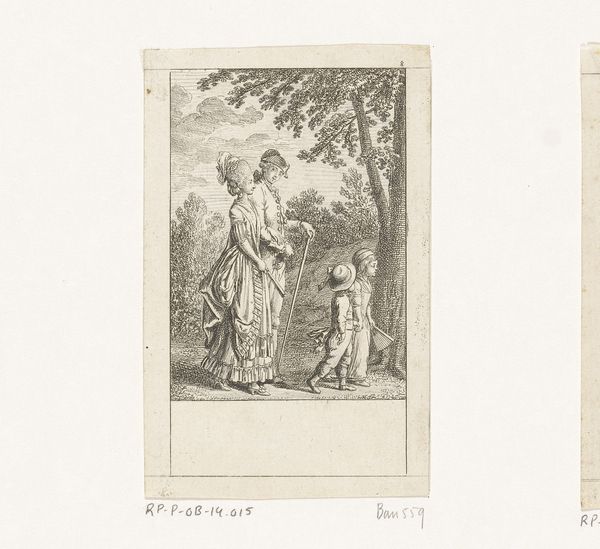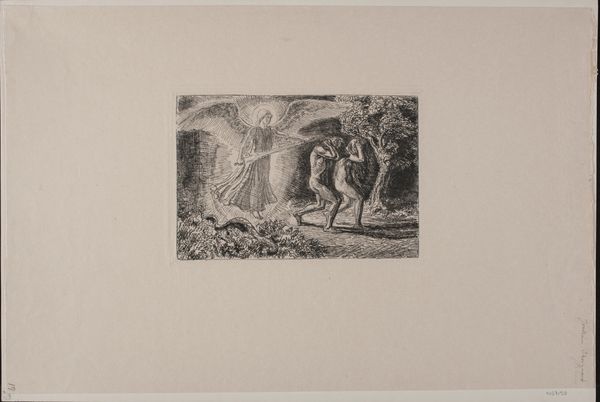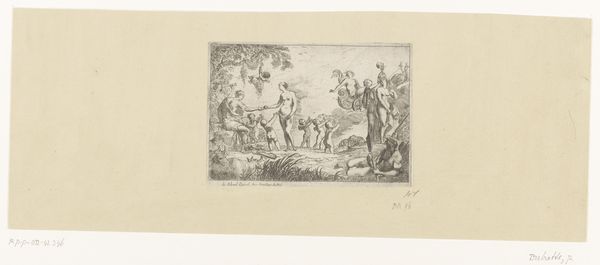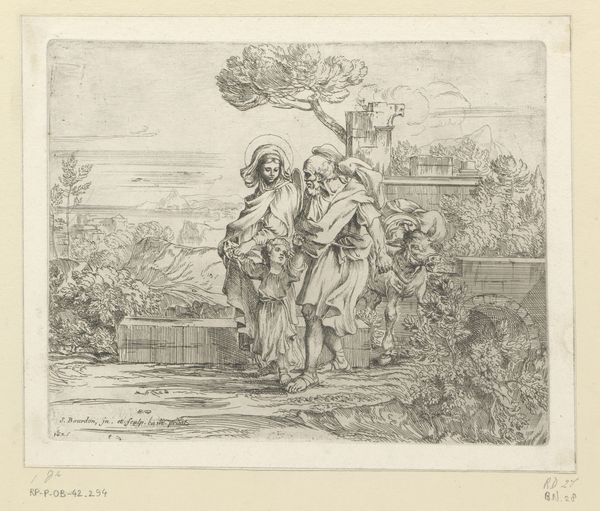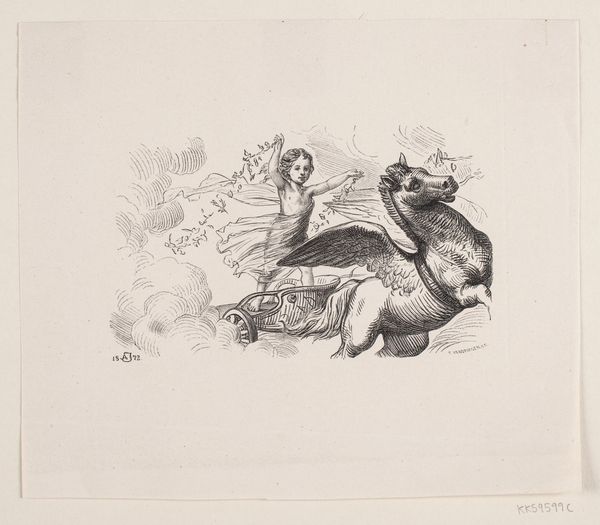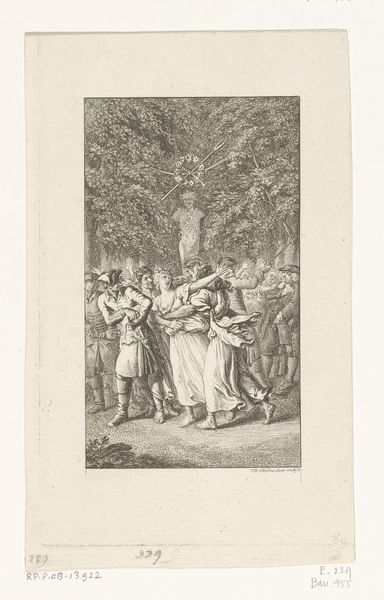
Dimensions: height 45 mm, width 65 mm
Copyright: Rijks Museum: Open Domain
Daniel Nikolaus Chodowiecki etched "Luise sterft naast het graf van Franz" – "Luise Dies by Franz's Grave"–, an engraving, sometime before 1801. Note the cross, a potent symbol, marking Franz's grave; it’s adorned with winding flora, signifying remembrance and the eternal cycle of life. The cross has appeared throughout history, from early Christian symbols to medieval crucifixes, each iteration carrying its own cultural weight. Even in pre-Christian times, cross-like symbols were revered across various cultures, representing cosmic balance and intersection. The swooning Luise, overcome by grief, echoes the classical motif of the Mater Dolorosa, or sorrowful mother, a common theme in religious art depicting Mary’s grief at the loss of Christ. This image speaks to the depths of human emotion, tapping into our collective memory of loss and mourning. The figures surrounding Luise, attempting to support her, remind us of the shared human experience of grief. The heart-wrenching scene, with its roots in centuries of artistic and cultural expression, engages us on a profound, almost subconscious level. This symbol resurfaces time and again, transformed yet familiar, in the vast theater of human history.
Comments
No comments
Be the first to comment and join the conversation on the ultimate creative platform.
